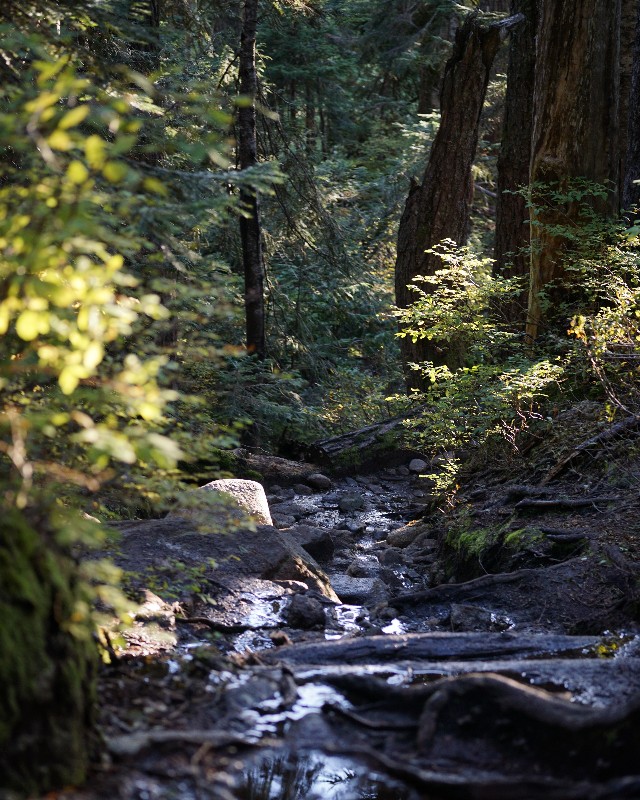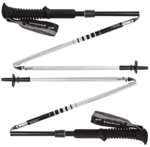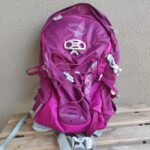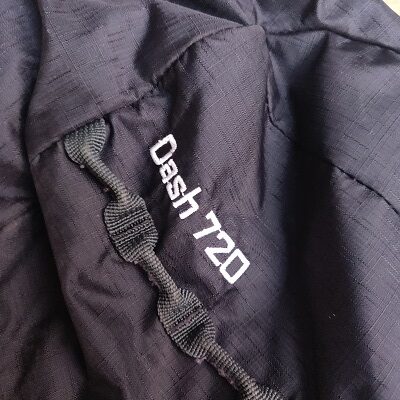COVID-19 has changed everything we know about travel. We changed how we eat, we changed how we get from place to place, and we changed what we look for in a travel destination.
In 2020, we traded bustling downtown districts for socially distanced destinations. I search for nearby hiking trails instead of looking up the closest rooftop bars. Instead of bar hopping, we went rock skipping.
If you weren’t already a lover of the great outdoors, this past year surely converted you.
- Socially distanced human interaction? Check.
- Wallet-friendly fun? Check.
- Instagram-worthy backdrops? Check.
- Excuses to exercise (and skip another gym day)? Check.
- BYOB? We won’t tell you not to!
If you are hooked on hiking but getting bored of the trails near you, maybe it’s time to start planning your next hiking trip. The US has an amazing system of national parks, state parks, and nature preserves to explore.
With countless trips under our collective belt, I consolidated our teams’ best tips & favorite recommendations to help you opt outside on your next trip.
Support for this site comes from our readers, and this post contains affiliate links. Consider using the affiliate links below to help the StandbyWithMe team continue creating useful content for travelers like you.
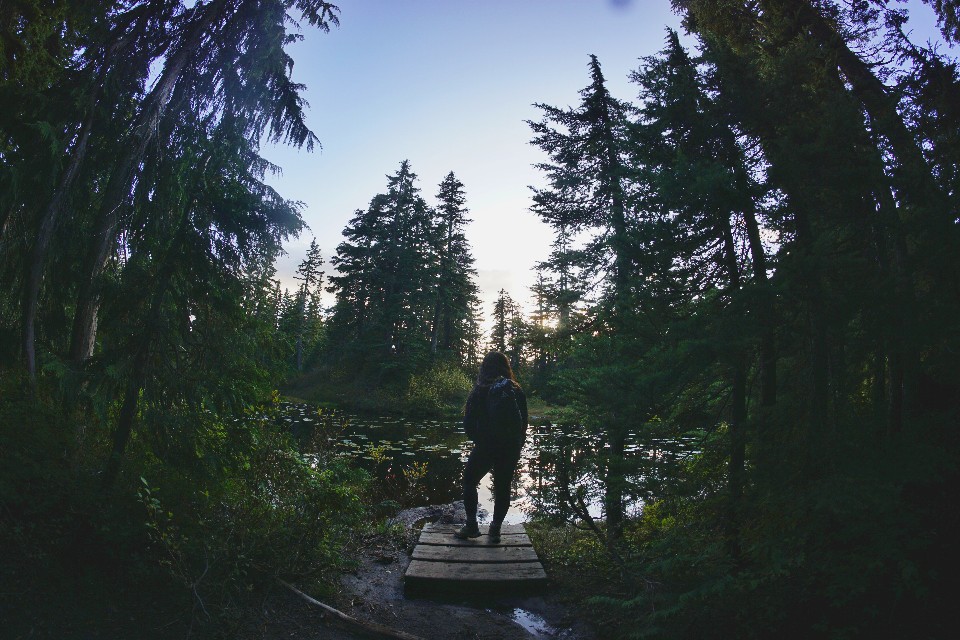
Where can I find the best hiking trails?
The best part about hiking is that you can find a trail or route to explore nearly anywhere in the world. My absolute favorite non-rev weekend trips have been to Banff National Park (closest airport: YYC), Cypress Provincial Park (closest airport: YVR), and Mission Peak (closest airport: SJC).
However, you don’t have to travel to the Canadian Rocky Mountains or California’s coast to find amazing hiking trails (though they do feature breathtaking views). North America offers an endless supply of hiking destinations to choose from.
Finding nearby hiking trails is easy with the help of AllTrails and their community-sourced ratings. I have used their app to find great trailheads no matter where I end up in the world. The app features length data, pictures, difficulty ratings, and reviews submitted by other nature seekers to give you an idea of what to expect when you arrive.
As a frequent weekend traveler, I look for day hikes that are between 2-5 hours. Since I like to spend time picnicking & taking in the sights on my hikes, that means I am generally looking for hikes in the 5- to 10-mile range.
An average hiker will cover about 3 miles per hour on flat ground or 2mph on hilly/uneven trails, so you can use those figures to help estimate how long any trail should take you.
What are the different types of hiking?
The definitions and labels associated with hiking seem to constantly be growing, but we think they can all be distilled down into three major archetypes:
Day Hiking
Day hiking is a general term used to describe easily accessible trails that you could visit & complete on any given day.These trailheads will likely feature a nearby parking location so you can drive up to it and drive away after finishing up.
For weekend warriors & non-rev travelers like us, this is what we look for when traveling. If we are only in town for a night or two, slotting a day hike into our itinerary is an easy way to sneak in some exercise & explore our natural surroundings while giving us a chance to also discover the city itself.
You don’t need to bring a lot of stuff with you on a day hike, but I still like to pack a light backpack with essentials like a first aid kit, trail mix, and a couple cans of good beer.

Backpacking
Are you ready to take your love for the outdoors up a notch and spend a night (or more) outside? The next step up from day hiking is referred to as backpacking and encompasses overnight stays in tents or shelters.
Bringing a larger bag that can carry everything you need for a multi-day backpacking trip is essential. Think about what it would take for you to live 24+ hours outside of your house.
Extra clothes, plenty of food, and flashlights are the bare minimum for hiking trips like this. If you are flying to your destination, you can bring a tent on an airplane so long as the tent spikes & poles are stowed in your checked luggage.
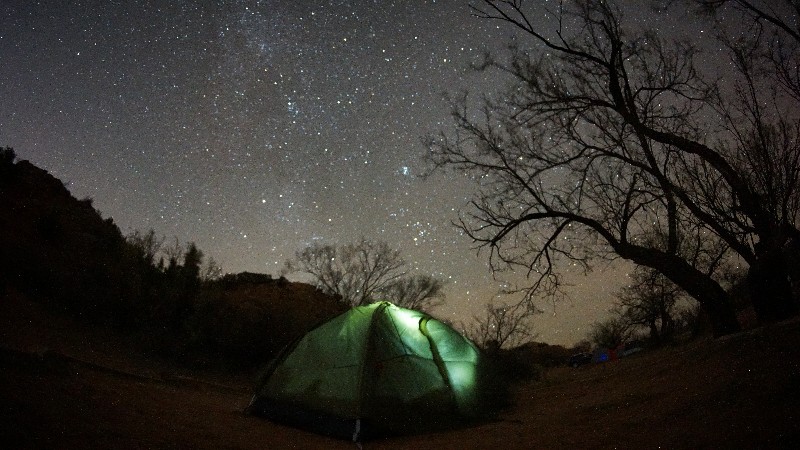
Thru-hiking
Thru-hiking is such an extreme form of backpacking that I think it needs its own category.
Have you ever dreamt of leaving the real world behind and losing yourself in the wilderness? Thru-hiking may be for you. Thru-hikers pride themselves on long-distance treks that last days, weeks, and even months. Thru-hiking doesn’t have any specific limits per se, but you can expect thru-hikers hitting trails as short as 50 miles all the way up to the 5,000-mile long American Discovery Trail that stretches from Delaware to California.
While you won’t be accomplishing any thru-hikes on a weekend non-rev adventure, thru-hiking is a seriously impressive accomplishment (and thus should not be taken lightly).
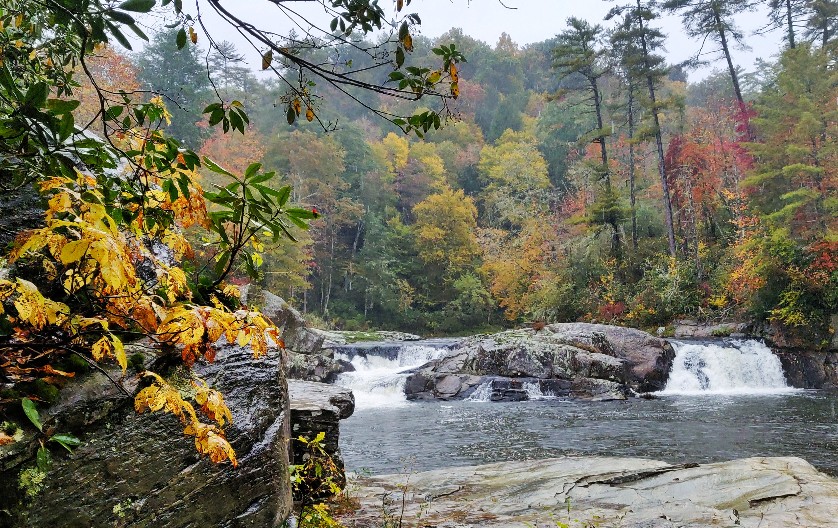
What should you pack for a hiking trip?
There are three important categories to consider when packing for a hiking trip: what you wear, the bag you bring, and what you pack inside that bag.
Choosing the right clothing for a hiking trip
First and foremost, let’s make sure you pack the right clothes.
Understanding the forecast on your travel/hiking days is crucial. If the highs at your destination are in the 70s but you will be hiking early in the morning when the temperature is in the 40s, you will need to pack accordingly.
For warmer hikes, we opt for thinner tops and light shorts/leggings. Synthetic athletic wear performs well on warm weather hikes, but any material you have that won’t pool your sweat can work. If you are planning your hike along a river or some time of water feature, quick-drying shorts let you jump in & out of the water without stopping you to change clothes.
For colder hikes, layering is your friend. A long sleeve base layer and an insulating mid-layer are a great place to start, and you can add an undershirt or warmer outer jacket if the temperature really begins to drop. The key is having layers that are easy to add on or take off as the hike progresses and you heat up (or experience significant temperature swings on the trail).
Nothing is worse than getting unexpectedly soaked by rain on a hike, so make sure you bring along a packable rain jacket if there’s even a slight chance of showers in the forecast. Try to stay away from cotton pants in the case of rain & cold, too. Waterproof bottoms are a lifesaver if you ever get caught in the right: soaked pants suck.
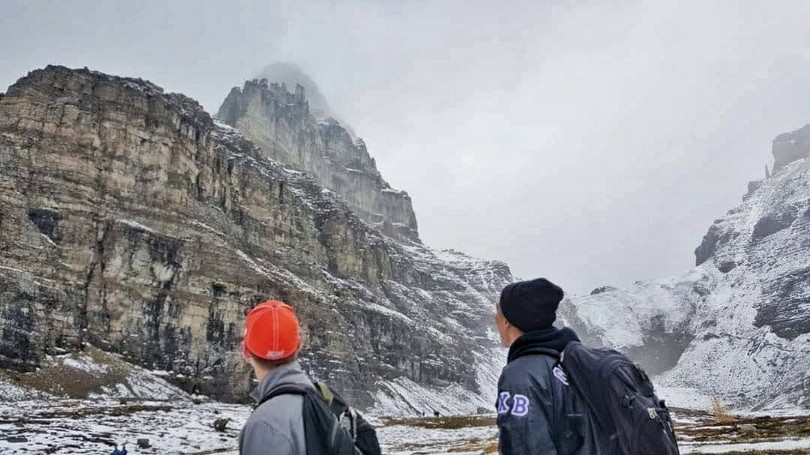
Choosing the right footwear for a hiking trip
While your average running shoes may be fine for flat and well-maintained trails, getting a pair of purpose-made footwear is the best investment you can make once you start tackling some serious hikes.
Hiking Boots vs. Hiking Shoes vs. Trail Runners
One of the newer debates in the hiking world is what footwear reigns supreme. We are here to tell you that it’s very much a personal preference. Any trail-specific footwear will serve you better than normal athletic/running shoes which do not have the right tread for reliable traction on the trail.
We prefer hiking boots for their ankle support and (potentially) better style, but let’s breakdown the most popular options:
Hiking Boots
Hiking boots are the classic go-anywhere, do-anything footwear. They are generally the most rugged option and should be built like a tank (which also makes them the heaviest option). Hiking boots provide an over-the-ankle structure and cover more of your feet than other footwear.
| Pros | Cons |
| + Durable | – Heavy |
| + Lots of support & protection | – Break-in period required |
| + Waterproof (most of the time) | – Waterproof uppers mean they aren’t very breathable |
Hiking Shoes
This is a general term that basically takes a hiking boot and produces it in a low-top silhouette. Hiking shoes retain much of the same rugged features of boots with a lighter shoe.
| Pros | Cons |
| + Durable | – No ankle support (though research suggests this may not be as impactful as once believed) |
| + Good protection | – Honestly, many shoes in this category are ugly (hot take alert) |
| + Lighter than boots |
Trail Runners
Trail running shoes have become the belle of the ball lately. Popularized by ultralight hikers and trail runners (both of whom value weight savings & speed on the trail), these high-tech shoes marry the comfortability of running shoes with the aggressive tread found on hiking shoes. These are the lightest of the bunch and look very similar to the pair of running shoes in your closet.
| Pros | Cons |
| + Comfortable out of the box (little to no break-in required) | – Least amount of protection |
| + Very light | – Will wear out quicker due to material & construction |
| + Generally dry very quickly |
Choosing the right socks for a hiking trip
Your shoes connect you to the trail, but don’t forget that your socks are an important piece of the puzzle. Trust us, skip the cheap blended socks and splurge on cushioned merino wool socks. Merino socks are ridiculously comfortable, wick away moisture to keep your toes dry, and will help regulate your temperature on both ends of the spectrum.
What type of backpack should I bring on a hiking trip?
When I fly on a weekend hiking trip where I know I won’t be camping overnight, I pack my cheap Ascend Dash 720 packable daypack inside of my larger Topo Designs Mountain Pack so I can just bring along the smaller daypack the actual day hike. My 36.8L Mountain Pack is an awesome bag that can easily withstand a long hike, but it is overkill for shorter trails when I don’t need as much carrying capacity.
That said, I wouldn’t hesitate to actually hike with my larger backpack if I needed the extra carrying capacity because I find my Topo Designs backpack comfortable to wear for hours at a time.
A comfortable backpack is the obvious choice for hiking and, unless you are going on an insanely long or overnight hike, any ol’ backpack will do. When you are tackling day hikes that don’t require an overnight stay, the type of backpack you bring is less of a concern than what is inside.
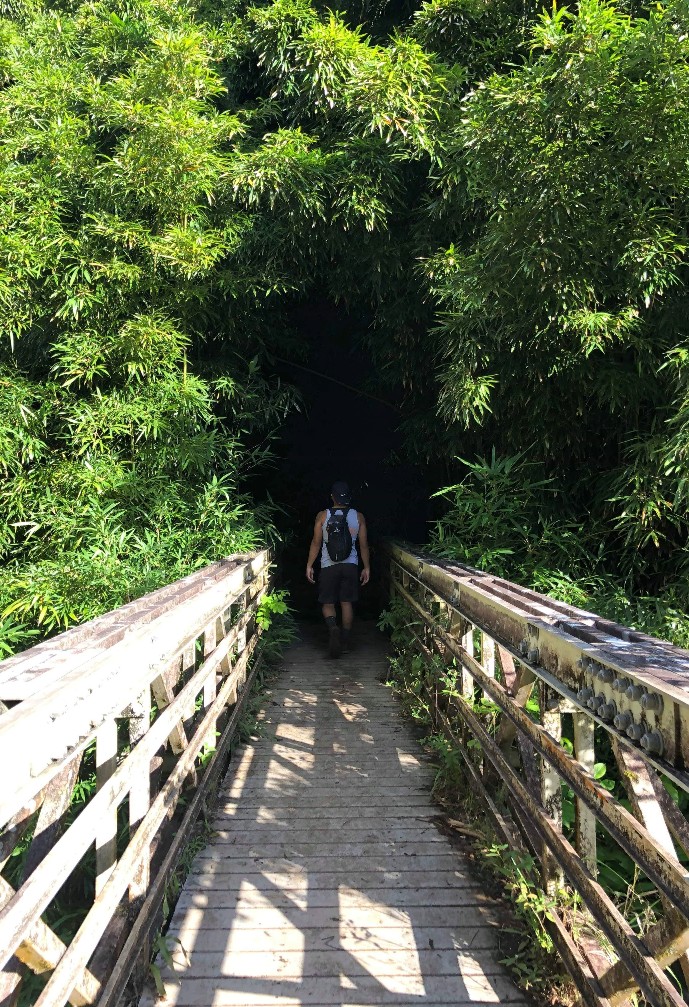
Found a backpack that is comfy for a quick hike? Great! Now let’s dive into what we actually need to pack for a short- to medium-length hike. .
Reusable Water Bottle
If you only remember one thing from our musings, remember this: always overestimate how much water you need when hiking.
Sunscreen
I used to be terrible about putting on sunscreen. I wrongly assumed that my darker skin better protected me than my fair-skinned friends, but you only get one skin so you better treat it right. If you are flying, make sure to pack a TSA-compliant bottle that is 3.4oz or less.
- Sun Bum Original SPF 30 Sunscreen Lotion (Vegan and Reef Friendly)
- Neutrogena Ultra Sheer Dry-Touch SPF 100 Sunscreen Lotion
First Aid Kit
Plan for the worst and hope for the best. Hopefully you will never need to use a first aid kit on your hike, but you will be glad you had it if anything goes awry.
- Small First Aid Kit – 100 Piece (make sure to remove the scissors from this one to avoid the ire of TSA agents)
- Adventure Medical Kits’ Ultralight Watertight First Aid Kit
Travel Blanket
If you enjoy picnicking on your hikes as much as I do, a light travel blanket is very useful. Blankets can be bulky and take up a lot of room in your bag, so look for a thin & packable option.
Snacks & Energy Bars
Going on a hike that’s longer than an hour or two? Bring along some extra trail mix, fruit, or energy bars to make sure you have enough sustenance.
Hiking Flashlight
I know you use your cellphone as a flashlight at home, but I can promise you that your phone’s light will be a pain to use on the trail. Do yourself a favor and pack a cheap & durable flashlight. For hands-free operation, which is incredibly useful when setting up a tent at night, opt for a headlamp instead.
External Battery Pack
You probably don’t need one of these on a short hike, but having backup juice for your electronics on longer hikes (especially overnight trips) is very reassuring.
Trashbags
“Take only photographs, leave nothing but footsteps“ is one of my favorite quotes. If you are bringing anything on your hike that needs to be disposed of, be a decent person and bring it back with you.
Pro Tip: instead of buying actual trashbags, this is an opportunity to reuse leftover shopping/grocery bags.
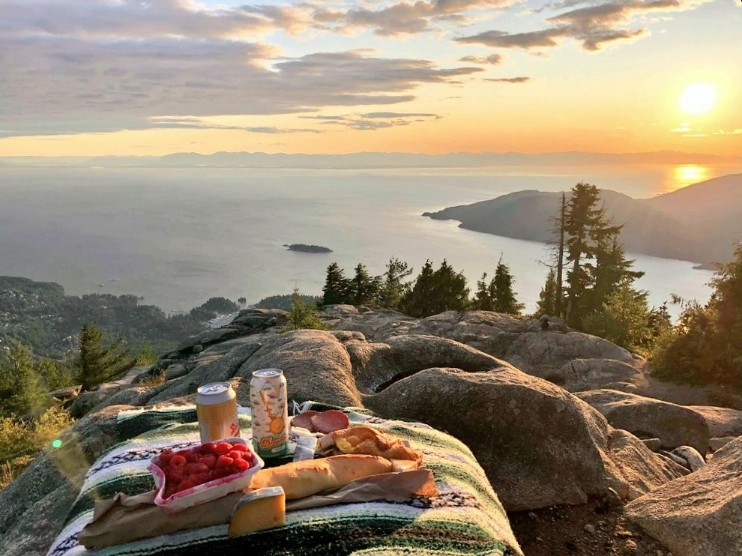
Final Thoughts
When you are flying to a destination for a new trip, use this guide to make sure you have the essentials.
Every hiking trip is unique and may require more specific items, but this is my standard loadout for every trip. For example, I like to bring along my mirrorless camera to capture pictures of our hiking adventures. Also, there is a good chance I have either cold brew coffee or cans of craft beer in my bag at any given time.
Do you have something that you bring with you on every hiking trip? Let us know in the comments below!
